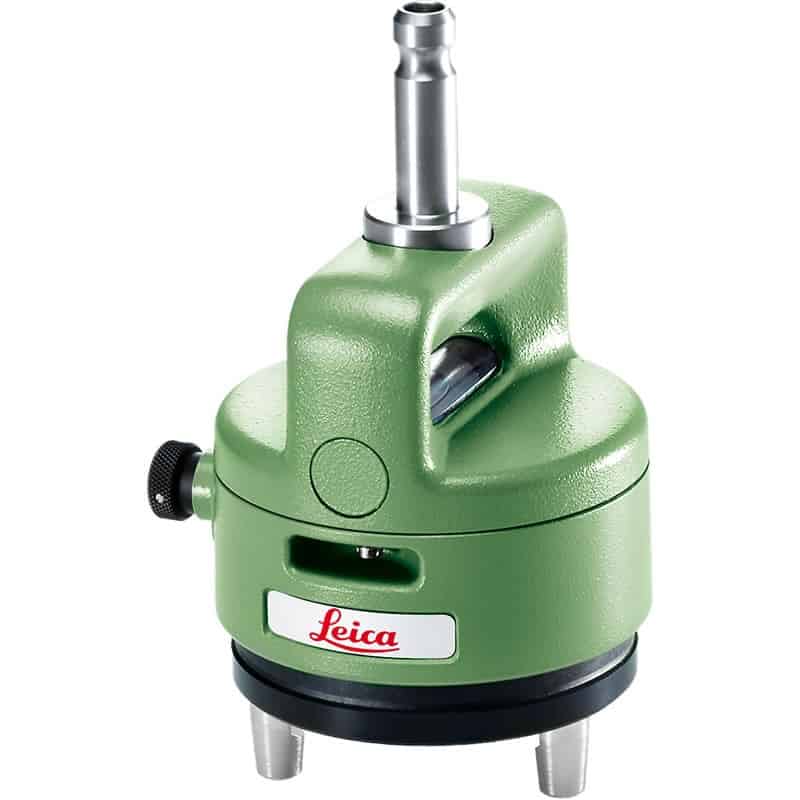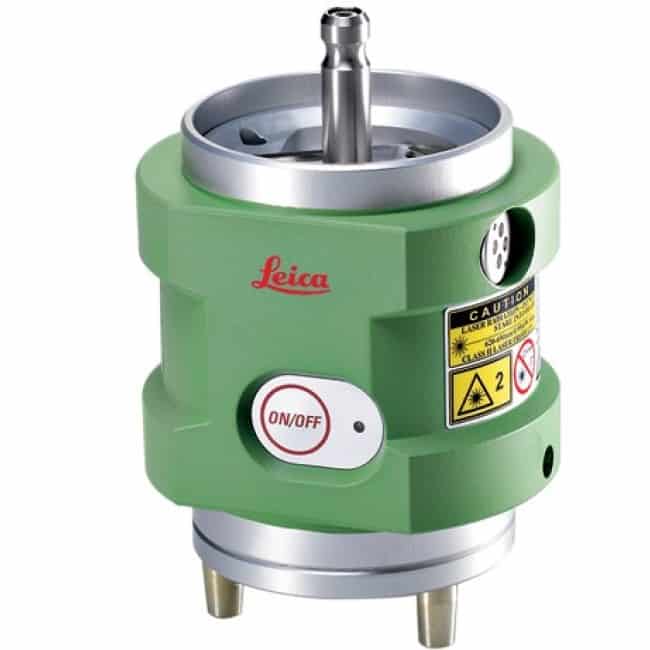Running standard closed traverse, anywhere along the line; double the foresight with tri-pod/brach/prism, move the instrument forward, level up and you're plummet is off the point by a tich, not much but a noticeable amount, what do you do....
I am sliding back over, but out of the 40+/- guys I've crewed with over the years (most recent being the senior surveyor at my new firm), about half (and usually the more seasoned) would leave it be; reasoning that if you move it you are no longer occupying the point as shot.
My feeling is by merely leveling the brach to the vial on the instrument vs the fish-eye, I have already changed the location, and whatever the difference that's part the adjustment process.
Interested in hearing your thoughts on the pro or cons.
When you have located your tribrach assembly, adjust the unknown point in the ground to match location.
Be it a known point in the ground, it may require a do over...........depends upon how far off the setup is and what required accuracy you must maintain.
Make a diagram in your notes reflecting direction and error.
Your optical plummet may be wobbly. It happens. Set it up. Then rotate a fraction of a turn and look through the plummet again. Rotate another fraction of a turn and look again. You may actually be seeing slightly different things each time.
True answer is to adjust your tribrach. You should not be over a noticeably different point after fine adjustment. Until that happens leave it where it is.
It sounds like your tribrach is out of adjustment or your instrument is out of adjustment. You can likely figure out which one by setting up your instrument on multiple tribrachs to see if it is off on all or just one of your tribrachs. Which ever it turns out to be, get it adjusted. If you don't, you won't truly know the location of your points on the ground. All your traverse observations and adjustments are related to the equipment on top of the tripod and projected straight down to a specific point on the ground. If your equipment is not plumb to the point on the ground, then all calculations of that point's position are invalid. Meaning, you can never re-occupy that point with any confidence.
Sent from my iPhone using Tapatalk
I would say you have to be more pro-active in adjusting your tribrach base plummets more regularly. I would suggest you do what I do, spend money and get Topcon tribrachs with the see through optical plummets. I adjust them using my instrument plummet, so I know every thing is in agreement before I go into the field. I can see if one instrument leg moved more than the others, so the first task is to adjust the legs to bring the tribrach back to level. Typically with the Topcon tribrach levels my fine adjusting of the instrument does not move me an unacceptable amount. If I am uncomfortable I would move it half way back, which most likely is closer to reality than a full return, because nothing is exactly as it seems.
Paul in PA
Theoretically, something is out of adjustment. Realistically, something is always out of adjustment.
I slide. It negatively affects your closure; but, I think is more accurate.
So you have matching tri-brac's? I was never that lucky when traversing, and now have little use for traversing since GPS. Jp
Unless I think that something knocked it off, or frost moved it, I'm going to leave it alone. My thinking is that by leaving it, you're now set up exactly where the target was, even if it's slightly off the tack.
If you need to go back and re-occupy the point later on for layout, then you should be doing some other checks anyway, besides just a BS check. And depending on what you're doing, how far your FS's are, it shouldn't be an issue.
If it's a lot off the tack when I go to set the TS, I'd stop my traverse right there, and adjust my tribrach.
Fredh, post: 425033, member: 12570 wrote: Running standard closed traverse, anywhere along the line; double the foresight with tri-pod/brach/prism, move the instrument forward, level up and you're plummet is off the point by a tich, not much but a noticeable amount, what do you do....
I am sliding back over, but out of the 40+/- guys I've crewed with over the years (most recent being the senior surveyor at my new firm), about half (and usually the more seasoned) would leave it be; reasoning that if you move it you are no longer occupying the point as shot.
My feeling is by merely leveling the brach to the vial on the instrument vs the fish-eye, I have already changed the location, and whatever the difference that's part the adjustment process.
Interested in hearing your thoughts on the pro or cons.
Old Joe Glidden used to say that forced centering was great, if you never needed that hub again for anything. This is why.
A gent from Lawton used to always say, procedures, procedures, procedures.
I am an old gray-haired solo surveyor, therefore, I usually limit my traversing to tying out points under canopy or adding conventional ties to a GPS network. I never liked tribrachs with built-in plummets for the obvious question of when did it go out of adjustment. I use Wild/Leica GDF-22 tribrachs with the optical plummets removed. I have 2 GZR-3 precision carriers with built-in optical plummets for the foresight and backsight. They include 30" plate levels so I don't have to depend on the fish-eye bubble. They rotate so that you can check their adjustment at every setup. After initial setup, I check the station setup with the instrument OP and again before picking it up at the backsight.
My suggestion would be to redo that portion of the traverse. Unless you know when or why the cheese slid off the cracker, so to speak.
Leica GZR-3 - Reflector centring accuracy 0.3mm, plummet accuracy 0.5mm at 1.5m.
For GPS work I use a Leica laser plummet with plate bubble for all the setups.
SNLL121 - Reflector centring accuracy 0.3mm, plummet accuracy 1.0mm at 1.5m.
I invested in a puck style tribrach bubble adjuster and it was well worth the cost and is easy to use.
Align it with two screws level and rotate 90 and level until all is level around and check and adjust the bulls eye level.
Keeping and transporting all my precision tools in padded cases helps greatly in keeping them in adjustment.
Is the objective to run a traverse along the tops of your tripods or the points on the ground?
lmbrls, post: 425289, member: 6823 wrote: Is the objective to run a traverse along the tops of your tripods or the points on the ground?
Both, or neither, depending how you look at it.
Fredh, post: 425033, member: 12570 wrote: level up and you're plummet is off the point by a tich, not much but a noticeable amount,
How big a "tich"? As others have said, if it's significant to the work then you either note the distance and direction from the point observed to the correct point on the ground and make the correction after calculating the traverse, OR redo the forward shot to the correct point.
Sliding gets you more accurate angle and distances taken at this point, but leaves inaccurate ones at the last point, and you have recorded no measure of how much those were off. So you haven't gained much, if anything, by sliding.
But the "tich"from re-leveling should be negligible for all but the most careful work if the bullseye on the tribrach is in good adjustment. It isn't as sensitive as the bubble in the instrument, so no matter how careful you are you may be maybe a few thousandths of a foot or a millimeter or two different. If it's a hundredth of a foot, or several mm, then you weren't careful enough or the bubble needs adjusting.
And was it only re-leveling that caused it? If it was due to settling of a leg, then how do you know that it will stay where you slid it? You need to get it set more solidly and do it over.
Fredh, post: 425033, member: 12570 wrote: My feeling is by merely leveling the brach to the vial on the instrument vs the fish-eye, I have already changed the location, and whatever the difference that's part the adjustment process.
While you have changed the point the plummet points with about 5 ft of leverage, you've moved the target or instrument much less with it's fraction of a foot height above the pivot point. Experiment with that some time by focusing on the target and then turning its tribrach screws two standard "tiches" to see how much the target moved.
Bill93, post: 425310, member: 87 wrote: How big a "tich"?
Just enough to be noticeable, a hundredth or under, say 1/2 a tack head, enough that if you were first setting up, you would move it over the point.
I brought this up as a general discussion topic, as I had this debate over the weekend and wanted to garner a broader base of opinion. Assuming the equipment is in reasonable adjustment, so basically just the difference from sighting the point with a level a fish-eye, verses after leveling out the vial/plate &/or electronic bubble on the instrument when occupying.
I slide it to match the point. Unless like mentioned above where you have the better level bubble on an adaptor, you gun will have a better level bubble than a tribrach. Hence when you level the gun up, it might be off a little bit.
A tich here and a tich there will add up quickly when you are at the beginning of your traverse.
The Surveyor1 Cogo has a routine that will test for blunders and errors and find the most likely setup with those little buggers.
I look things in a way that when my amount of adjustment for angular error to apply to each setup is not more than half of what your instrument's quoted least amount of angular accuracy, you are doing pretty good.
Measure with micrometer, mark with chalk, cut with an axe, hammer to fit, paint to match...
If you move your tribrach when occupying you are not doing forced centring.
I would rather be a couple of mm out on each point than mess up the tightness of the traverse. The errors could compound and then you adjust out the slop at the end. In my minds eye I can see errors of more than 2mm being allocated to some points by this process.
As others have said, reversible prism holders with plummets are necessary. At least for the forward station.





